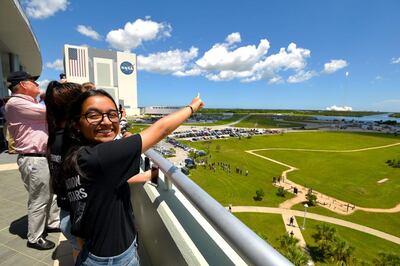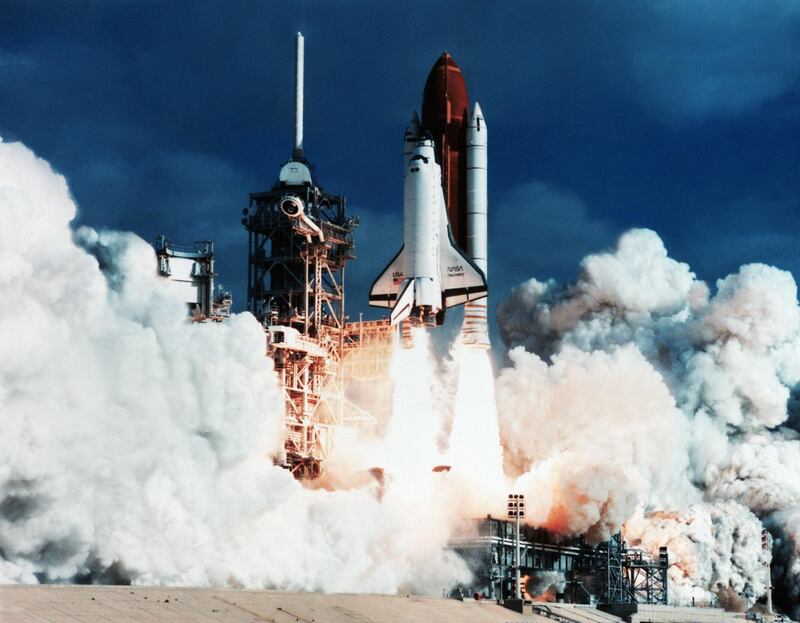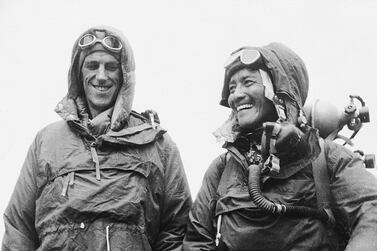Ramadan 2020, in the Islamic year 1441, will always be remembered for one thing: Covid-19. But momentous events have always occurred during the holy month down the years.
As part of a series delving into Ramadan over recent decades, starting in 1950, we look back over the last 70 years at some of the headlines from previous Ramadans, with an emphasis on the positive, of news that shows the strength and creativity of the human spirit.
1990 (1410) March 28 – April 25
At the Berlin Olympics of 1936, Jesse Owens overturned Adolf Hitler’s fantasies of a master race by winning four gold medals, including the 100 meters, under the nose of the Nazi leader.
The irony was that in Owen’s native US, black people were subject to an almost equal degree of racial prejudice, and abuse of their civil rights.
On March 29, 1990, Owens was awarded a fifth gold medal, the Congressional Gold Medal, presented to his wife, Rush, by President George H Bush. It was a posthumous award; Owens had died 10 years earlier, having been denied a visit to the White House or even a telegram of congratulations from President Franklin Roosevelt on his return from Germany 53 years earlier.
Eid 1990 saw the Space Shuttle Discovery blasted into orbit carrying a cargo that would soon become a household name.
The Hubble Space Telescope, named after the American astronomer Edwin Hubble, would send us some of the most remarkable images of our universe over the next 40 years.
Not at first though. An error in the telescope’s main mirror had to be corrected in a servicing mission three years later. Still operating, Hubble will be replaced by the more powerful James Webb Space Telescope next year.
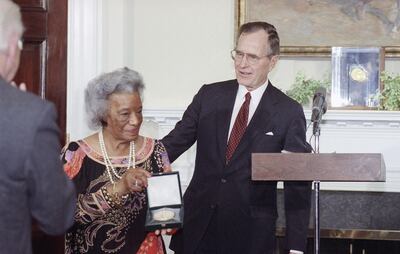
1992 (1412) March 6 – April 4
Imran Khan bowls to England tail ender Richard Illingworth, to see him caught by Ramiz Raja. It is March 25, in Ramadan 1992, and Pakistan have beaten England to win their first Cricket World Cup.
The fifth World Cup was hosted jointly by Australia and New Zealand, and Pakistan only narrowly made it to the semi-finals, finishing fourth in the round robin stage, only a point ahead of tournament favourites Australia.
Pakistan reached the final with a semi-final victory over New Zealand, and then defeated England by 22 runs at the Melbourne Cricket Ground with Khan’s captain’s inning of 72 that was his last before retiring from international cricket, and the start of his journey towards becoming the current prime minister of Pakistan.
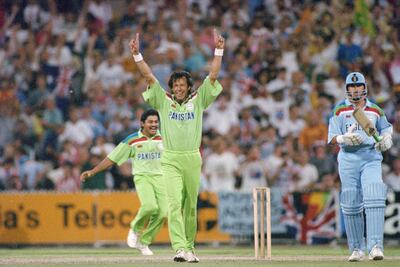
1996 (1415) January 22 to February 20
On February 10, 1996, Gary Kasparov, a Russian grandmaster, and regarded by many as the greatest chess player in history, sat down with his toughest opponent to date.
The venue was Philadelphia and on the other side of the board was Deep Blue, a supercomputer designed and built by IBM.
After 36 moves, Kasparov resigns. It is the first time a computer has beaten a reigning chess world champion.
The Russian would later claim he believed there had been human intervention in some of the computer’s moves, but went on to win three and draw two of the six game tournament.
Kasparov and Deep Blue, now upgraded, met again the following year and this time the computer narrowly came out on top. The Russian demanded a rematch but Deep Blue had been dismantled by IBM.
By 2006, computers had become so advanced that there were no further matches with humans to determine superiority.
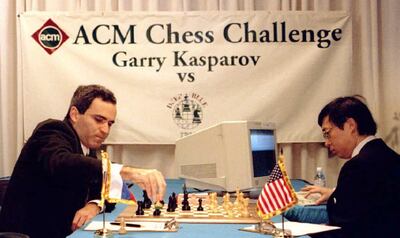
2001 (1422) November 16 – December 16
The Leaning Tower of Pisa’s main claim to fame is, well, that it leans. Built in the 12th Century, the cathedral bell tower has clay foundations that soon began to subside on one side.
By 1990, the tilt had reached 5.5 degrees and the historic building was in real danger of falling over.
A Dh98 million rescue mission was launched by Italian authorities in1990 with the delicate task of lessening the tilt but only just enough to allow the tower’s lean to remain a major tourist attraction.
The cathedral bells were first taken down, while steel cables anchored the tower to the ground. Over 70 tonnes of soil were then removed from one side of the foundations, reducing the tilt by 45cm and returning the building to the lean of 1838.
On December 15, 2001, the (slightly less) Leaning Tower of Pisa was declared stable for the next 200 years and reopened to the public.
According to Guinness World Records, the Capital Gate tower in Abu Dhabi is now the world’s "farthest man-made leaning building” at 18 degrees or five times greater than Pisa.
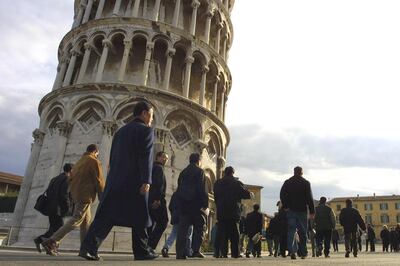
2008 (1429) September 1 – October 1
September 28, 2008, saw a demonstration satellite payload successfully deployed after launching from an American military airbase in the Pacific.
This was Falcon 1, the first orbital launch of a privately funded and developed space rocket.
Space X had been founded in 2002 by the billionaire Elon Musk with the ambitious goal of reducing the costs of space travel to allow a privately funded mission to Mars.
Musk, born in South Africa but also a US citizen, made his fortune with the creation of PayPal, and had created Tesla, the electric vehicle company in 2003.
Space X was his most ambitious venture yet but the first three flights of his Falcon 1 ended in failure. The success of the fourth launch heralding a new era of commercial space travel, with the next flight, in July 2009, putting an observation satellite developed by Malaysia into low Earth orbit.
Falcon 1 was replaced by the more powerful Falcon 9, whose first stage is reusable and can land under its own power.
It was a Space X Falcon 9 that carried the experiment by Genes in Space winner Alia Al Mansoori to the International Space Station in August 2017.
Space X hopes to make history again later this month, when its Dragon capsule will take American astronauts to the ISS.
It will be the first US manned space flight since the ending of the Space Shuttle programme in 2011 and only the fifth crewed space craft since American sent John Glenn into orbit in 1962.
Musk still has his eyes set on Mars, developing his Starship, which he says will be capable of interplanetary travel and could make its first test flight as early as next year.
